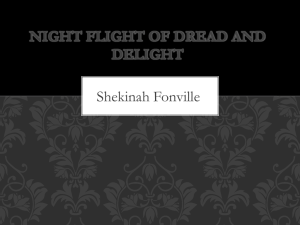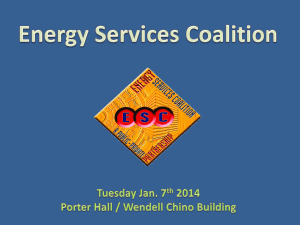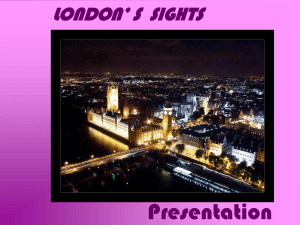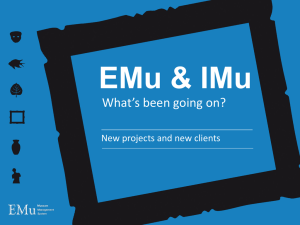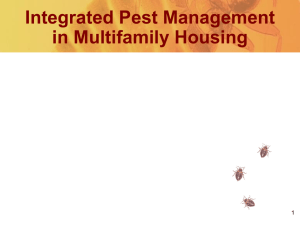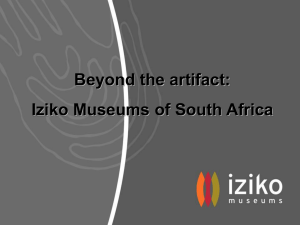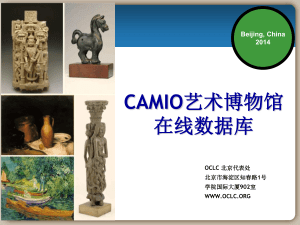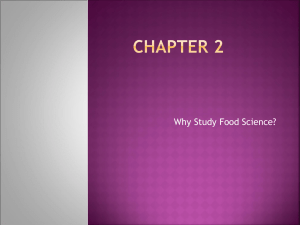best-practices
advertisement
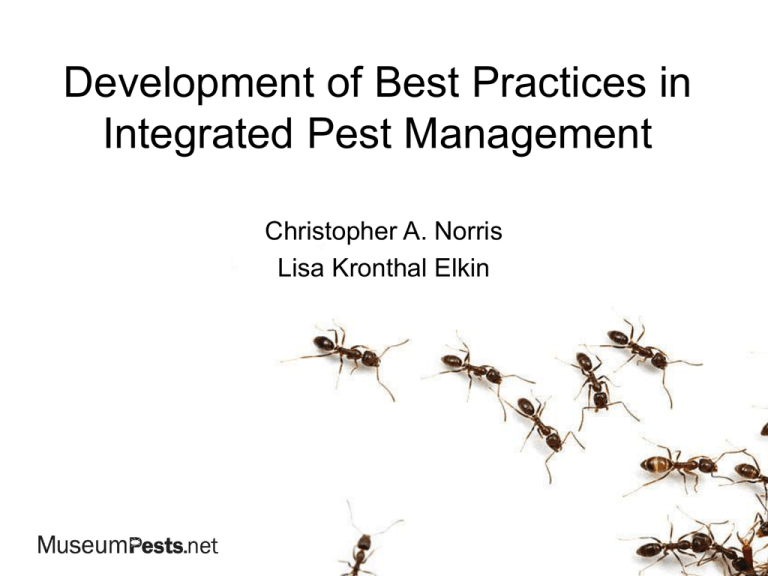
Development of Best Practices in Integrated Pest Management Christopher A. Norris Lisa Kronthal Elkin Why Best Practices For IPM? • IPM was identified as a need by around 75% of respondents to Heritage Health Index survey, 2005 Heritage Preservation & IMLS, 2005 The IPM Working Group An ad hoc group of museum professionals dedicated to the development of pest management resources for the general museum community Then (2000)… American Museum of Natural History Canadian Conservation Institute National Museum of the American Indian Texas Tech University Zak Software Now (2008)….. American Museum of Natural History Lower East Side Tenement Museum Museum of Fine Arts, Boston The Natural History Museum, London National Museum of the American Indian Historic New England National Museum of Natural History Peabody Museum of Natural History, Yale Canadian Museum of Nature Smithsonian Museum Support Center U.S. Army Heritage and Education Center Peabody Museum of Archaeology & Ethnology Milwaukee Public Museum Canadian Conservation Institute Swedish Museum of Natural History Artex Fine Art Services, Inc. New York Historical Society Denver Museum of Nature and Science Baltimore Museum of Art Applebaum & Himmelstein Insects Limited, Inc. Harvard University Herbaria Steritech, Inc. Yale University Science Libraries Upstate History Alliance Zak Software Etc…… Resources • • • • MuseumPests.net PestList Wiki site Annual Meeting Five Thematic Areas • • • • • Data Collection Identification Aids Treatments Web Resources Standards & Best Practices Standards & Best Practices Subgroup • Three main areas – Policies – Procedures – Tools • Activities – Gather available resources from community – Vet resources and make available via web – Develop template documents for policies and procedures What do we mean by “Standards& Best Practices”? • Standard: A generally accepted level of attainment for use as a basis of comparison in measuring or judging performance[1]; a codification of technology or procedure developed, tested, peer-reviewed, and published by a professional society or governmental agency; to be adhered to by members and subscribers; generally must be followed closely in attention to its prescribed detail[2] [1] Merritt, E. 2005. Standards of Stewardship – presentation at the annual meeting of The Association of College and University Museums and Galleries, Bloomington, Indiana, April 30, 2005. [2] Hathaway, A.W., 1992. Standards, guidelines, and protocols: Keeping our house in order. AEG News, 35(1): 26-28. Cited in Cato et al. (2003), MuseumWise: Workplace Words Defined. • Best Practices: a technique or methodology that, through experience and research, has proven to reliably lead to a desired result[1]; generally agreed upon but not legislated[2]. Commendable actions and philosophies that successfully solve problems, can be replicated, and demonstrate an awareness of standards[3]. [1] SearchSoftwareQuality.com/definitions [2] Cato et al. (2003), MuseumWise: Workplace Words Defined. [3] Merritt, E. 2005. Standards of Stewardship – presentation at the annual meeting of The Association of College and University Museums and Galleries, Bloomington, Indiana, April 30, 2005. Defining the Audience Who are the major players in setting procedures and policy within institutions? – – – – – – – Administration Building Management Security & Safety Vendors (including food services, events, etc.) Research/Collections Exhibition & Education Human Resources How do we influence these institutional “supergroups” to deliver effective IPM? • Define the role of each group in IPM • Find an incentive, or incentives • Speak to their needs • Develop a tool to address this process ► The Grid The Grid is not a “best practices” document… But – it does lay out the framework of consultation that is necessary to implement an IPM strategy And – it provided the groundwork for the Subgroup’s development of best practices documents To download the Grid…. http://www.museumpests.net/tools/FINAL-S&BPgrid.pdf Review • Pulled together a set of 46 institutional IPM documents – 28 policy documents – Also training resources, procedures, etc. • Reviewed by Subgroup for – Content – General applicability • 10 policy documents passed by the group – Sought institutional permission – Posted on website To download sample policies… • http://www.museumpests.net/resources/sampledocs.html Minimum Requirements for an IPM Policy – – – – Introduction Objective/Scope Justification Applicability • Overall responsibility • Other roles and responsibilities – – – – – – – Training Support/Budget Best Practices Monitoring Remedial Action Documentation Review/Revision Policy Template • Uses the minimum requirements • Provides guidance notes under each heading • Notes were based on Grid’s recommendations for framing and targeting content Minimum Requirements for IPM Procedures – Introduction – Applicability • Roles and responsibilities – Procedure-Specific Information – Monitoring – Documentation – Review/Revision Seven Procedure Templates • • • • • • • Who is the IPM plan directed at? Control of Access Control of Environment Housekeeping/Removal of Shelter Control of Food/Live Plants/Catering Monitoring/Data Analysis Treatment To Download Templates… • http://www.museumpests.net/tools/templates.htm The membership of IPM-WG is broad… • IPM-WG draws from the experiences and expertise of a wide range of individuals and institutions. • This breadth of input is vital when determining best practices • In the longer term, it’s also essential for the development of effective standards This has been a community-led and supported, “grass roots” process… • IPM-WG is not affiliated with any particular institution or society • Although AMNH has hosted all the meetings to date, individuals and their institutions meet the costs of attending • We receive a small amount of sponsorship and our website is hosted by one of the participants, Zak Software IPM-WG is an open group.. • A general invitation to the meeting is sent out via listservers – anyone from the community who wants to attend can do so • The work processes are transparent – all documents are posted for comment and review on the Wiki site. Our goals are practical… • Throughout the process, our goals have been practical – to develop tools and resources that can be downloaded and used by any institution IPM-WG may act as a model… • IPM-WG provides an example of how standards and best practices can be framed in a community-led process that goes across traditional institutional and disciplinary boundaries • The development of The Grid as a first stage enabled us to frame documents that would speak directly to the major institutional players in any IPM plan. We think this approach is widely applicable to standards and other policy development Standards or Best Practices? Standard: A generally accepted level of attainment for use as a basis of comparison in measuring or judging performance; a codification of technology or procedure developed, tested, peerreviewed, and published by a professional society or governmental agency; to be adhered to by members and subscribers; generally must be followed closely in attention to its prescribed detail Best Practices: a technique or methodology that, through experience and research, has proven to reliably lead to a desired result[1]; generally agreed upon but not legislated. Commendable actions and philosophies that successfully solve problems, can be replicated, and demonstrate an awareness of standards. Want to know more? • To join IPM-WG – Rachael Arenstein: rachaelarenstein@hotmail.com • To learn more about the S&BP subgroup – Derya Golpinar: dgolpinar@tenement.org • To join the Pest list – http://www.museumpests.net/listsignup.asp • To download this presentation and all other documents mentioned – http://www.museumpests.net/ Acknowledgements • Rachael Arenstein, Neil Duncan, Richard Monk • All members of IPM-WG and especially S&BP Subgroup Members: Barbara Brown, Derya Golpinar, T. Rose Holdcraft, Emily Kaplan, Jeremy Jacobs, Gail Joice, Linda Klise, Judith Levinson, Suzanne Ryder, Mike Schwetz, Laura Smyk, Gwen Spicer, Tom Strang, Amber Tarnowski, Paul Wilkinson • Insects Limited, Steritech, and Zak Software for support of the group and the annual meetings • AMNH Division of Vertebrate Zoology for hosting the meetings • Alex Wild, University of Arizona, for permission to use insect images (myrmecos.net) The End

